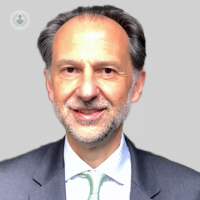NanoKnife: A groundbreaking approach to treating prostate cancer
Written in association with:NanoKnife is an innovative treatment for prostate cancer that uses irreversible electroporation (IRE) to target cancerous cells while preserving surrounding healthy tissue. This non-thermal, minimally invasive technique is gaining attention as an alternative to traditional treatments like surgery and radiotherapy, particularly for localised prostate cancer.

How does NanoKnife work?
NanoKnife uses pulses of electrical energy to create microscopic holes in cancer cells, leading to their destruction. Unlike other treatments that rely on heat (such as laser or radiofrequency ablation), NanoKnife does not cause thermal damage, which helps preserve critical structures like nerves and blood vessels.
What are the benefits of NanoKnife for prostate cancer?
- Minimally invasive: Performed using fine needles, reducing the need for open surgery.
- Preserves surrounding tissue: Reduces the risk of damage to nerves, helping to maintain urinary and sexual function.
- Short recovery time: Most patients experience faster recovery compared to traditional treatments.
- Lower risk of complications: Less impact on urinary continence and erectile function compared to surgery or radiotherapy.
Who is a suitable candidate for NanoKnife treatment?
NanoKnife is generally recommended for patients with localised prostate cancer that has not spread beyond the prostate. It may be considered for:
- Patients looking for a focal therapy approach to target cancer without removing the entire prostate.
- Those who are not suitable for surgery due to medical reasons.
- Patients wanting a treatment with fewer side effects on urinary and sexual function.
What is the recovery process like?
- The procedure is performed under general anaesthesia and typically takes about one to two hours.
- Most patients can return home the same day or within 24 hours.
- Normal activities can usually be resumed within a few days, with minimal discomfort.
- Regular follow-up scans and PSA tests are required to monitor treatment success.
How does NanoKnife compare to other prostate cancer treatments?
|
Treatment |
Invasiveness |
Recovery Time |
Risk of Side Effects |
Suitability |
|---|---|---|---|---|
|
NanoKnife (IRE) |
Minimally invasive |
Quick recovery |
Lower risk of incontinence & erectile dysfunction |
Localised cancer |
|
Surgery (prostatectomy) |
Invasive |
Longer recovery |
Higher risk of urinary & sexual side effects |
Localised & advanced cancer |
|
Radiotherapy |
Non-invasive |
Gradual recovery |
Can cause bowel & urinary issues |
Localised & advanced cancer |
|
Hormone therapy |
Non-invasive |
Ongoing treatment |
May cause fatigue & hormonal side effects |
Advanced or recurrent cancer |
NanoKnife is an advanced treatment option for localised prostate cancer, offering precise tumour targeting with fewer side effects than traditional methods. While it is not suitable for all patients, those seeking a minimally invasive approach with a quicker recovery may benefit. Consulting a specialist can help determine whether NanoKnife is the right choice based on individual circumstances.


